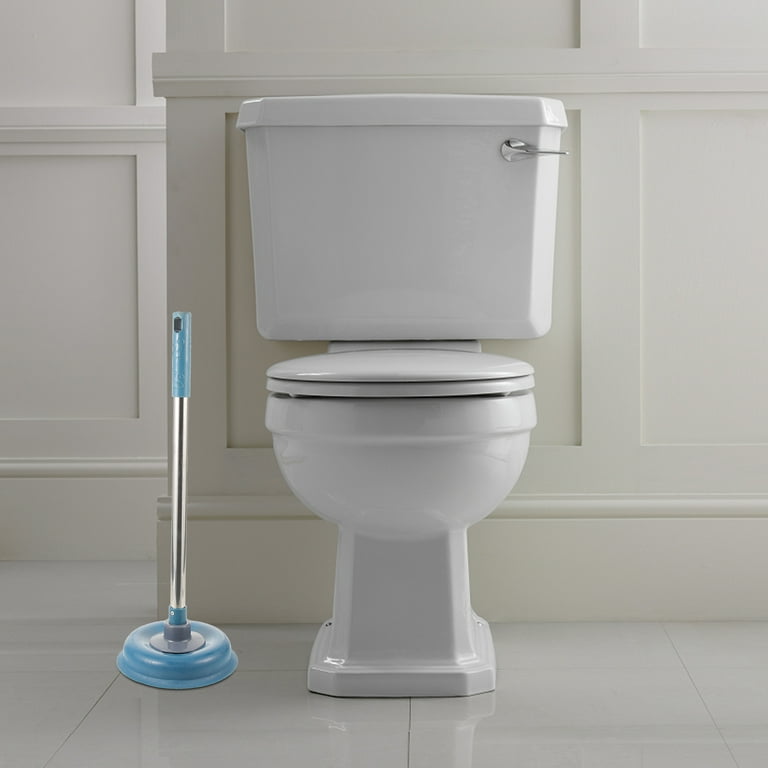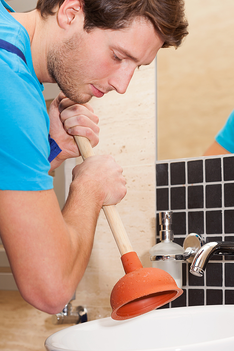Master Plungers and Drain Cleaners Methods: Expert Advice
Master Plungers and Drain Cleaners Methods: Expert Advice
Blog Article
They are making a number of great observations relating to How to Unclog Your Sink with a Plunger as a whole in this great article further down.

Introduction
Correct upkeep of family drains is vital for stopping blockages and guaranteeing smooth water flow. Among the secret tools in every homeowner's toolkit is the bettor, together with various drainpipe cleaners designed to take on stubborn clogs properly. This short article explores exactly how to use bettors and drainpipe cleaners properly to keep your drains pipes flowing easily.
Area 1: Comprehending Bettors
Types of Plungers
There are a number of sorts of plungers offered, each made for different types of drains and blocks. One of the most common types include mug bettors, flange plungers, and accordion plungers.
Exactly How Plungers Job
Bettors service the concept of producing stress and suction to dislodge blockages. When appropriately applied over a drainpipe, they develop a vacuum that can take out particles or break up blockages.
Picking the Right Plunger
Choosing the ideal plunger relies on the type of drain and the nature of the obstruction. Mug bettors are ideal for sinks and tubs, while flange plungers are much better fit for toilets due to their layout.
Typical Mistakes with Bettors
Preventing these mistakes ensures reliable plunging: improper seal around the drainpipe, inadequate pressure, and not clearing bordering debris.
Area 2: Using Plungers Successfully
Preparation
Before diving, guarantee the bettor covers the drainpipe completely and develops a limited seal. Clear any kind of visible debris around the drain opening.
Method
Beginning with mild plunging movements to develop suction. Rise stress gradually, using a stable rhythm. Repeat as needed till the drainpipe gets rid of.
Repairing Tips
If diving does not function, attempt readjusting the seal, using oil jelly for a much better seal, or utilizing a different type of plunger.
Area 3: Understanding Drainpipe Cleaning Company
Sorts Of Drainpipe Cleaners
Drain pipes cleansers can be chemical or enzymatic. Chemical cleansers utilize solid chemicals to dissolve obstructions, while chemical cleansers utilize all-natural enzymes to break down raw material.
How Drainpipe Cleaning Company Work
Chemical cleaners react with clogs to liquify them, while enzymatic cleansers break down organic products like hair and grease without damaging pipes.
Security Considerations
Constantly put on gloves and eye security when using chemical drain cleansers. Guarantee ample ventilation and adhere to producer guidelines thoroughly.
Eco-Friendly Alternatives
Take into consideration using vinegar and baking soft drink or enzyme-based cleansers for environmentally friendly alternatives that are safer for pipes and the atmosphere.
Section 4: Utilizing Drainpipe Cleaning Company Effectively
Application Techniques
Put chemical cleansers straight right into the drainpipe opening. Permit them to benefit the recommended time prior to flushing with hot water. Enzymatic cleaners should sit overnight.
Precautions
Stay clear of blending various kinds of cleaners, as this can create hazardous fumes. Never make use of chemical cleaners in conjunction with a bettor, as splashing can occur.
Managing Persistent Clogs
For consistent obstructions, consider using a plumbing snake or calling a professional plumbing professional to stop damage to pipes.
Verdict
To conclude, understanding just how to make use of plungers and drainpipe cleansers successfully is vital for maintaining healthy and balanced plumbing systems. By choosing the right tools and strategies, property owners can take on minor blockages and avoid major plumbing issues down the line.
HOW TO EFFECTIVELY USE A PLUNGER
Chances are you’ve had to use a plunger a time or two. Having this bathroom tool within reach keeps things running smoothly when an unexpected clog strikes. Plungers can be easy to use, but there’s more to this bathroom staple than meets the eye.
How to Use a Plunger?
A plunger clears obstructions in a toilet, sink, or drain. Plungers are the simplest and most cost-effective tool for unclogging toilets. They’re available in different shapes and sizes, but all of them work on the same principle.
A cup-shaped rubber object is attached to the end of a flexible tube. The cup is inserted into the drain and then pushed up and down to create suction. This vacuum dislodges any clogs or obstructions in the drainpipe.
How You Really Should Use a Plunger?
Position the plunger over the drain and cover the opening completely.
Make sure there is the right amount of water in the bowl. There should be enough to cover the cup of the plunger. If there is too much water, remove any excess. If there is not enough, water should be added to the bowl.
Plunge rapidly in an up-and-down motion to create suction. Do this motion for about 20 seconds.
In order to ensure that you have created a good seal, continue to apply pressure while plunging.
Repeat as many times as necessary to get the clog released.
Picking the Right Plunger
There are different drains in your home that can clog, and different plungers are specifically designed for various drains. Where some plungers are better suited to unclog a toilet, others are made to unclog sinks. Picking the right plunger can help unclog the drain more efficiently.
Flange plungers are commonly used to unclog toilets
Cup plungers are better suited to unclog sinks
Accordion plungers are best for sed for tubs, or shower drains
Automatic plungers are more pricey but can send CO2 into the drain
Beehive plungers are able to plunge wide toilet drains
What to Do if a Plunger Fails
Try a chemical drain cleaner
Mix together a homemade solution of baking soda and vinegar
Pour a combination of boiling hot water and liquid dish detergent into the drain
Calling in the Pros at Elite Heating & Air
If all other methods fail and your clog still persists, it’s time to call in a professional plumber. The team at Elite Heating & Air can help restore balance to your drains and offers additional plumbing services for all your needs.
Drain cleaning
Water line repairs
Leak detection
Leak repairs
Kitchen and bathroom remodeling
Sewer Camera Inspection
https://www.elitecustomservices.com/blog/how-to-use-a-plunger/

Application Techniques
Put chemical cleansers straight right into the drainpipe opening. Permit them to benefit the recommended time prior to flushing with hot water. Enzymatic cleaners should sit overnight.
Precautions
Stay clear of blending various kinds of cleaners, as this can create hazardous fumes. Never make use of chemical cleaners in conjunction with a bettor, as splashing can occur.
Managing Persistent Clogs
For consistent obstructions, consider using a plumbing snake or calling a professional plumbing professional to stop damage to pipes.
Verdict
To conclude, understanding just how to make use of plungers and drainpipe cleansers successfully is vital for maintaining healthy and balanced plumbing systems. By choosing the right tools and strategies, property owners can take on minor blockages and avoid major plumbing issues down the line.
HOW TO EFFECTIVELY USE A PLUNGER
Chances are you’ve had to use a plunger a time or two. Having this bathroom tool within reach keeps things running smoothly when an unexpected clog strikes. Plungers can be easy to use, but there’s more to this bathroom staple than meets the eye.
How to Use a Plunger?
A plunger clears obstructions in a toilet, sink, or drain. Plungers are the simplest and most cost-effective tool for unclogging toilets. They’re available in different shapes and sizes, but all of them work on the same principle.
A cup-shaped rubber object is attached to the end of a flexible tube. The cup is inserted into the drain and then pushed up and down to create suction. This vacuum dislodges any clogs or obstructions in the drainpipe.
How You Really Should Use a Plunger?
Position the plunger over the drain and cover the opening completely. Make sure there is the right amount of water in the bowl. There should be enough to cover the cup of the plunger. If there is too much water, remove any excess. If there is not enough, water should be added to the bowl. Plunge rapidly in an up-and-down motion to create suction. Do this motion for about 20 seconds. In order to ensure that you have created a good seal, continue to apply pressure while plunging. Repeat as many times as necessary to get the clog released. Picking the Right Plunger
There are different drains in your home that can clog, and different plungers are specifically designed for various drains. Where some plungers are better suited to unclog a toilet, others are made to unclog sinks. Picking the right plunger can help unclog the drain more efficiently.
Flange plungers are commonly used to unclog toilets Cup plungers are better suited to unclog sinks Accordion plungers are best for sed for tubs, or shower drains Automatic plungers are more pricey but can send CO2 into the drain Beehive plungers are able to plunge wide toilet drains What to Do if a Plunger Fails
Try a chemical drain cleaner Mix together a homemade solution of baking soda and vinegar Pour a combination of boiling hot water and liquid dish detergent into the drain Calling in the Pros at Elite Heating & Air
If all other methods fail and your clog still persists, it’s time to call in a professional plumber. The team at Elite Heating & Air can help restore balance to your drains and offers additional plumbing services for all your needs.
Drain cleaning Water line repairs Leak detection Leak repairs Kitchen and bathroom remodeling Sewer Camera Inspection https://www.elitecustomservices.com/blog/how-to-use-a-plunger/

Do you appreciate reading about A Guide to Plungers (and How to Use Them)? Place a short review down the page. We will be happy to find out your suggestions about this write up. Hoping that you come back again later on. For those who appreciated our page kindly make sure you remember to share it. I thank you for your readership.
Click Here To Read More Report this page